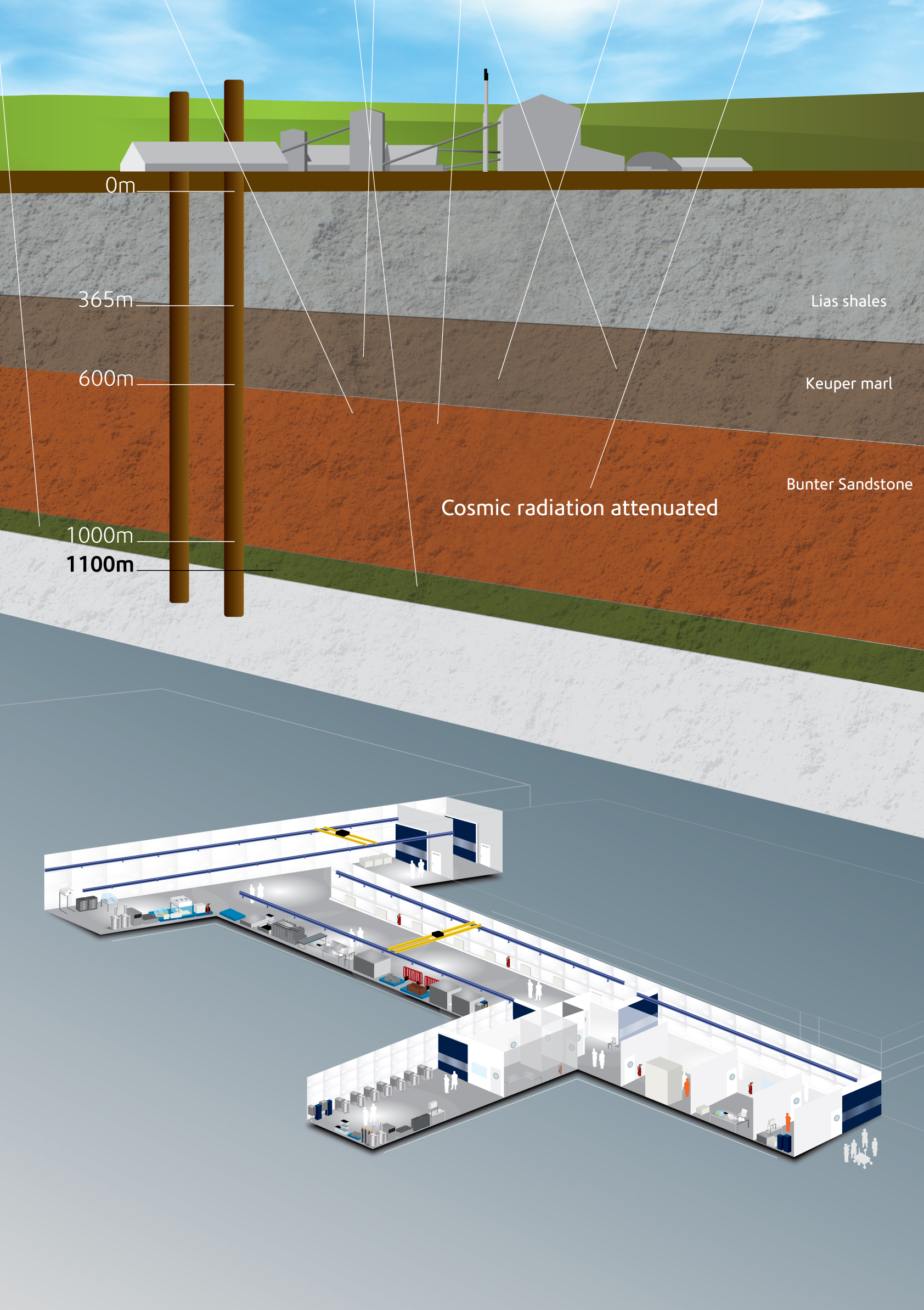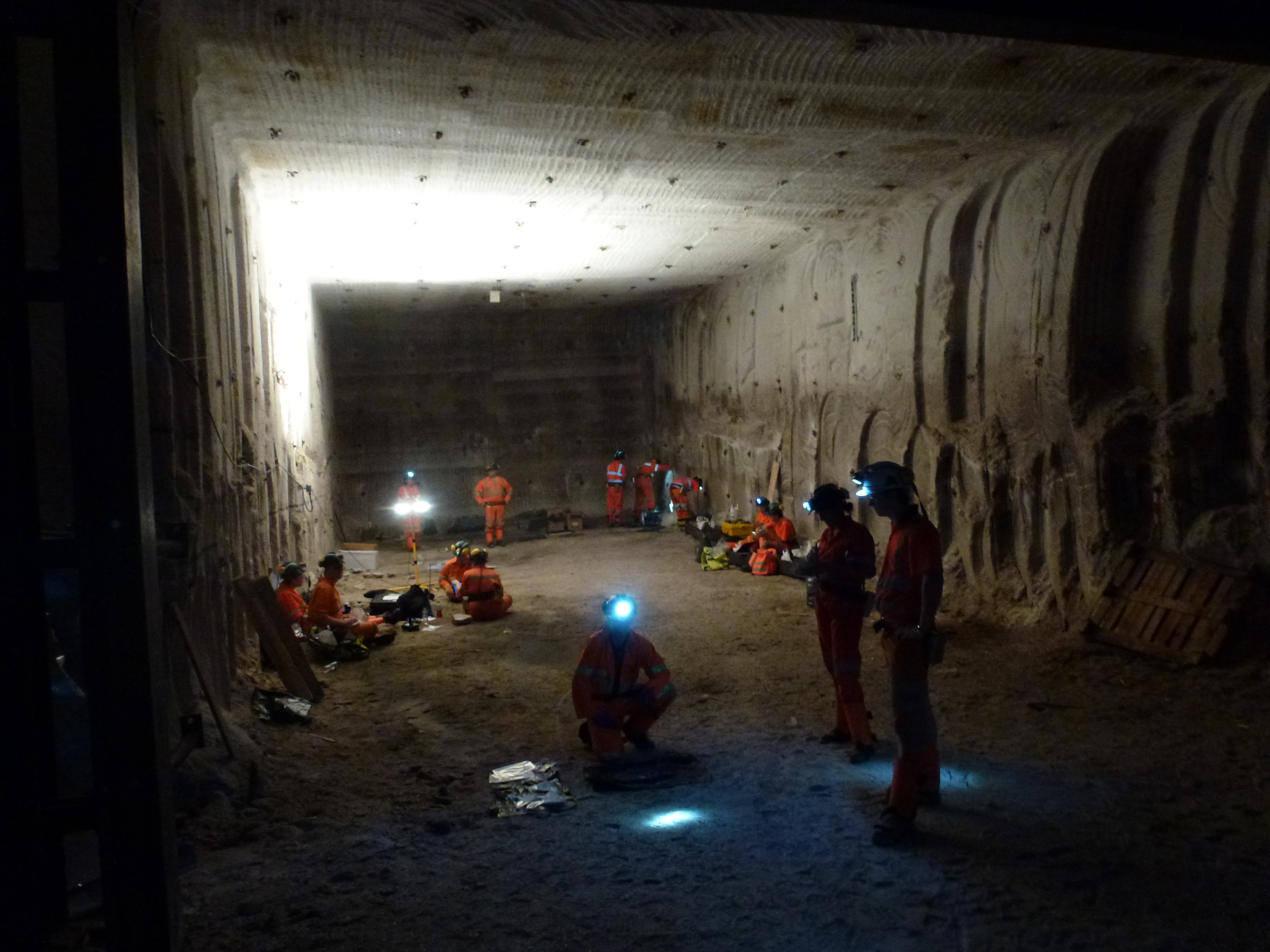The Boulby Underground Laboratory is located at Boulby Mine, between Saltburn and Whitby on the North East coast of England and on the edge of the North Yorkshire Moors. Boulby is a working polyhalite mine operated by ICL-UK. Reaching 1,400m at its deepest point, it is the deepest mine in Great Britain.

There is a huge network of roadways and caverns underground at Boulby with over 1,000kms of tunnel having been excavated since the beginning of mining operations in 1968. The salt and potash seams mined are left over from the evaporation of an ancient sea (the Zechstein Sea) some 250 million years ago. The main roadways and long lasting caverns are cut into the rock salt layer. At the location of the Boulby Underground Laboratory there is 1,100m of rock overhead resulting in a reduction in the rate of natural cosmic rays of a factor of 1 million compared to surface levels. With this, and with the surrounding rock salt being low in natural background radioactivity, Boulby makes an ideal site for ultra-low background and deep underground science projects.
Boulby has hosted deep underground science since the 1990s. The focus of early work was the search for Dark Matter, the ‘missing mass in the universe’ thought to be as yet unknown fundamental particles that only interact weakly with normal matter. Deep underground particle detectors designed to detect dark matter can be operated with vastly reduced levels of cosmic ray interference that would be experienced on the Earth’s surface. For over 2 decades at Boulby, UK and international scientists have developed and tested world leading dark matter detector technologies including the NAIAD and ZEPLIN detectors, the latter being one of the key technologies now used in the world’s most sensitive dark matter detectors. Boulby continues to host part of the CYGNUS (previously DRIFT) directional dark matter detector programme, and is home to BUGS (the Boulby UnderGround Screening facility), enabling world class ultra-low background material screening which is essential for future Dark Matter and other low-background / rare event studies.
The science conducted at Boulby now is highly multidisciplinary, with a wide range of studies needing access to low background experimental space or access to the geologically interesting deep underground environment. Science at Boulby now ranges from low background astroparticle physics (dark matter searches and more) to studies of geology/geophysics, climate, the environment, planetary exploration technology development, life in extreme environments on Earth and beyond.
The science support facilities at Boulby currently include a 4,000m3 deep underground laboratory for ultra-low background projects, with fully supported experimental areas operated at 10k and 1k clean room standards (ISO 7 and 6 respectively). With a footprint of 1,600m2, the laboratory has power, internet, 5T and 10T lifting capacity and air conditioning and filtration. In addition Boulby also operates a 3,000m3 Outside Experimental Area (OEA) in a nearby bare salt cavern for studies requiring supported access to the deep underground environment and geology.

The Boulby Underground Laboratory is operated by the Science and Technology Facilities Council (STFC) with the support of the Boulby Mine operators ICL-UK. For more information on STFC, please visit the STFC website. Or, for information on ICL-UK and Boulby mine, please visit the ICL website.
